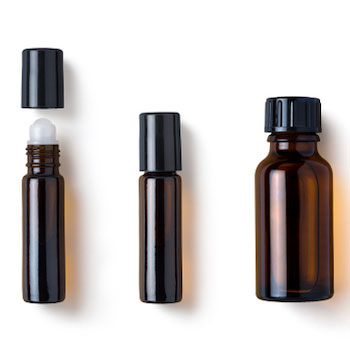Essential oils are highly concentrated plant extracts used traditionally to produce a lasting scent; they are sometimes marketed as dietary supplements. Each essential oil has a unique makeup and concentration that affects its smell (or “essence”), which varies from plant to plant. It can require hundreds of pounds of plant material to produce just a single bottle of essential oil. Ingesting such highly concentrated essential oils could be life threatening.
Essential oils are sometimes marketed for oral use, but the evidence to suggest they are safe to ingest is insufficient.
Essential oils are commonly used for aromatherapy (through the sense of smell) and for absorption through the skin. Essential oils can be applied to the skin in diluted form—combined with carrier oils in soaps, ointments, and body-care products—or they can be inhaled by adding a few drops to steaming water, such as in a diffuser or humidifier. They are not intended for use undiluted. If essential oils are not properly diluted, they can cause poisoning, regardless of the form they are in.
In aromatherapy, the “essence” of the oil is promoted to positively impact your health and well-being. For example, the aroma from lavendar oil diffused in steaming water might promote a sense of relaxation, and tea tree oil diluted with other oils in a soap might help with skin conditions. However, the undiluted form of an essential oil could cause severe reactions when inhaled or applied to the skin. When diluted sufficiently, the risk associated with essential oils is minimal.
Are essential oils safe as dietary supplements?
Some essential oils are sold in capsule or oil forms as dietary supplements, even though the concentration of the essential oil is generally unknown. If you cannot tell if and how the essential oil was diluted or encapsulated, you don’t know if and how toxic it might be to ingest. There is no reliable scientific evidence that consuming any essential oil orally is safe.
Are essential oils safe to use in foods?
Some “recipes” suggest using essential oils in cooking. Adding a pinch of oregano or rosemary from your garden to your favorite sauce is not the same as adding drops of an essential oil product. For example, one drop of peppermint essential oil is equal to about 26 cups of peppermint tea. Although some essential oil products are labeled “food-grade,” this doesn’t necessarily mean they are safe to ingest.
Essential oil products advertised for internal use are becoming popular on the market. If they are marketed as dietary supplements or to be added to food, and you can’t determine the concentration, whether it’s in a bottle or a capsule, as a general rule of thumb, do not ingest essential oils.
Updated 27 November 2020

